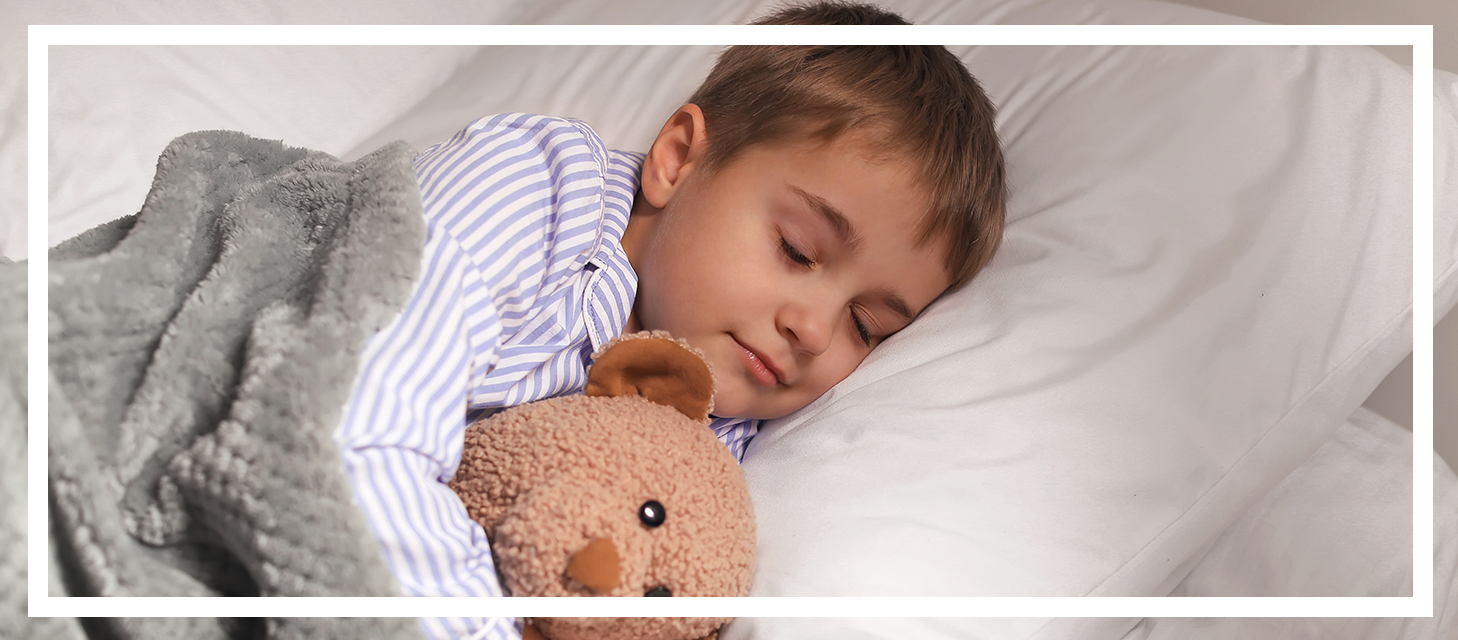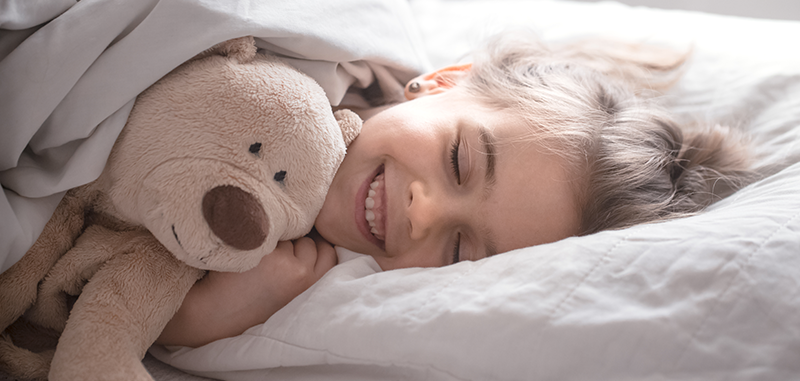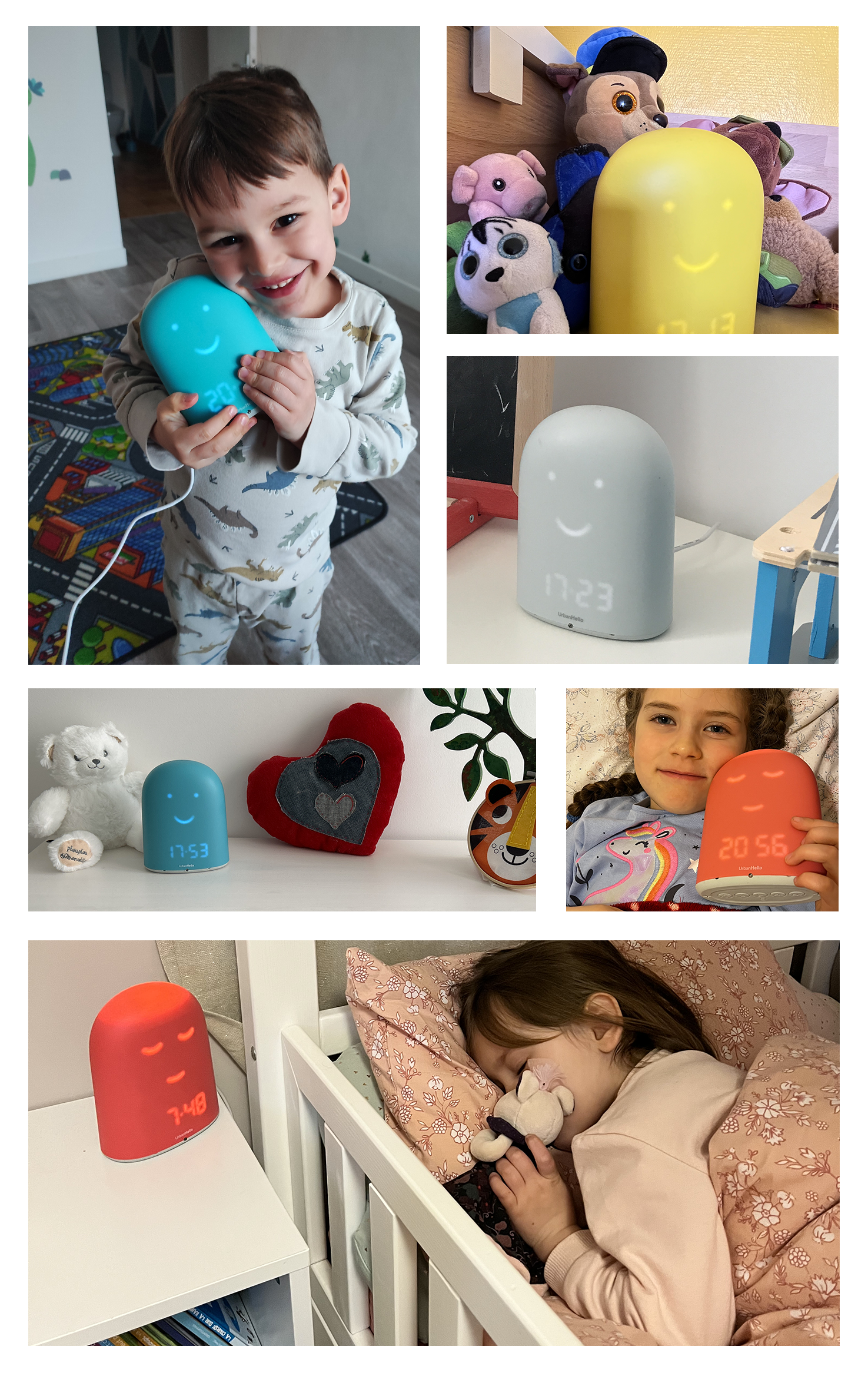Toddler Sleep Training (Ages 2–3): Building Healthy Sleep Habits

At ages 2 or 3, your child's sleep enters a pivotal phase.
Nights tend to become more consistent, with fewer nighttime awakenings as their sleep cycles gradually mature.
But this stage also brings its own challenges: emotional development—often intensified by the infamous “terrible twos”—can disrupt even the most promising nights.
Nightmares, anxiety, or sudden wake-ups are all common signs that reflect major milestones in emotional growth and self-regulation.
In this article, we’ll explore the unique aspects of sleep in toddlers at this age: How many hours of sleep do they need? Why is napping still important? How do changes in daily routine affect their nights? And most importantly, how can you support your little one in getting peaceful, restorative sleep?
Follow our guide to understand and navigate this stage filled with growth... and nighttime challenges!
Sleep Needs from Age 2:
Toddlers aged 2 to 3 have specific sleep needs that are essential for their growth and overall well-being.
Here’s a summary of general sleep recommendations for this age group:
- Nighttime sleep: Children between 2 and 3 years old need around 11 to 13 hours of sleep each night. At this stage, nighttime sleep is the main component of their total rest.
- Awake time: Wake windows between sleep phases typically range from 4 to 5 hours.
- Naps: Your little one still needs 1 to 2 hours of naptime daily. An early afternoon nap is usually key for most toddlers, although some may begin to shorten it around age 3.
- Total sleep (day + night): Altogether, toddlers need between 12 and 16 hours of sleep per 24-hour period.
To help your child sleep better, create a calm and consistent bedtime routine (reading, lullaby, cuddles) and stick to regular sleep times.
A quiet, screen-free environment before bed, along with a soothing and safe bedroom setup, is also essential for restorative nights and quality naps. Finally, watch for signs of tiredness to adjust sleep times to your child’s natural rhythm.
Recommended Sleep Duration by Age
| 🧒 Age | ⏰ Total Sleep per 24H | ⏱️ Awake Time | 😴 Naps | 🌙 Nighttime Sleep |
|---|---|---|---|---|
| 0 to 6 months | 15 to 18 hours | 30 min to 2 hrs | 3 to 6 naps | 9–12 hrs (interrupted) |
| 6 months to 2 years | 13 to 16 hours | 2 to 4 hrs | 2 to 3 naps | 10–13 hrs |
| 2 to 3 years | 12 to 16 hours | 4 to 5 hrs | 1 nap | 11–13 hrs |
| 3 to 5 years | 11 to 14 hours | 5 to 6 hrs | 1 nap | 11–13 hrs |
| 6 years and up | 8 to 12 hours | 6 hrs+ | No naps | 8–12 hrs |
What’s the Best Bedtime for a 2-Year-Old?
For a 2-year-old, it’s recommended to go to bed early, ideally between 7:30 p.m. and 8:30 p.m. At this age, getting enough high-quality sleep is essential for healthy cognitive, emotional, and physical development.
Bedtime should account for the time it takes to fall asleep, which is typically around 30 minutes. So, if you want your child to be asleep by 8 p.m., it’s best to have them in bed by 7:30 p.m.
Studies show that putting toddlers to bed before 9 p.m. leads to longer, more restorative nights. In contrast, a lack of sleep or late bedtimes can result in attention difficulties, increased irritability, and, over time, a higher risk of behavioral issues or weight gain.
To learn more, check out our full article: What Time Should Your Child Go to Bed? The Ideal Schedule by Age
Lastly, watch for signs of tiredness like yawning or crankiness—these are your cues that it’s time for bed. Every child is different, but putting your toddler down before 9 p.m. remains a key recommendation for peaceful nights and happy mornings.
The findings showed that children who go to bed after 9 p.m. take longer to fall asleep and get significantly less overall sleep. On average, kids who are in bed before 9 p.m. sleep up to 1 hour and 20 minutes more each night!
Contrary to popular belief, putting a child to bed later doesn’t mean they’ll wake up later. In fact, late bedtimes can disrupt sleep quality and negatively impact their mood and overall well-being.
It’s important to observe when your child shows signs of tiredness (drop in body temperature, lower energy and alertness, yawning, etc.).
Even from a young age, your child already has a natural sleep profile. Some are “larks” — early to bed and early to rise — while others are “owls,” preferring later bedtimes and wake-ups.
👉 We often track our children’s weight, but we rarely monitor their rest and activity rhythms.
Try keeping a sleep and energy journal noting the times your child shows early signs of tiredness, bedtime, wake-up time, and moments of high energy. This can help you align your family’s routine with your child’s unique biological rhythm.
Nap Needs for Toddlers Aged 2–3
Children between 2 and 3 years old typically need a daily nap to meet their total sleep requirement of 12 to 16 hours per day.
At this stage, a nap of 1 to 2 hours in the early afternoon is ideal. It allows your toddler to complete one or two full sleep cycles (each lasting around 45 minutes), providing enough rest without interfering with bedtime.
This ensures there’s enough awake time in the afternoon for your child to build up the necessary “sleep pressure” for an easier bedtime and higher-quality nighttime sleep.

Sleep Characteristics in Toddlers Aged 2–3
While every child has their own unique sleep profile, here are the main characteristics of sleep in children from age 2 onward:
While at 6 months they needed 3 to 4 naps spread throughout the day, they now only need one nap, typically lasting 1 to 2 hours.
This transition goes hand in hand with longer awake periods and reflects a maturing sleep-wake cycle. It also leads to more stable and consolidated nighttime sleep, which is essential for recovery and healthy development.
Each cycle now lasts approximately 70 to 90 minutes, a clear progression compared to early infancy.
During this time, your child moves through three stages: light non-REM sleep, deep non-REM sleep (key for physical recovery), and REM sleep (essential for brain development and memory).
With these longer, more structured sleep cycles, nighttime awakenings become less frequent—bringing calmer nights for the whole family. This marks an important step toward a more mature sleep rhythm!
To learn more about sleep cycles, check out our article here: Baby Sleep Cycles (0–3 years): Understanding and Supporting Healthy Sleep
👉 Your child is becoming more self-aware and may feel anxious about separating from you at night. Saying goodnight to the comforting presence of Mom and Dad can be emotionally challenging.
👉 They are also developing their personality by pushing boundaries and testing limits.
👉 For some toddlers, the idea of surrendering to sleep can be frightening. Nightmares, strange noises, or shadows in the room can all trigger fear and make it harder for your little one to settle into a restful night’s sleep.
ℹ️ Researchers estimate that 40% of toddlers aged 2 to 3 still wake during the night after 18 months, and 20% of them wake up more than once.
Your child may stay calm with eyes open, play quietly with their stuffed animals, and fall back asleep a little later.
These night wakings are only a concern if your child starts calling out for you—seeking your presence or asking for a bottle.
This burst of learning can sometimes affect sleep. What your child experiences during the day—intense emotions, discoveries, or frustrations—may show up at night as sleep disturbances such as nightmares, night terrors, or even bedwetting (enuresis).
Parasomnias are very common at this age and affect most toddlers between 2 and 3. They are usually temporary. However, if these disruptions persist and significantly interfere with your child’s sleep, it may be helpful to consult a specialist to support more restful nights.
Sleep Between Ages 2 and 3: A Challenging Learning Phase
The period between 2 and 3 years old can be especially difficult for your child.
That’s why it’s so important to celebrate every bit of progress!
More than ever, your child needs you and a calm, stable home environment. Even if life circumstances require it, it’s best to avoid big moves or other sudden changes during this time.
Calm and patient parents, a consistent bedtime routine, clear rules, and regular conversations about the importance of sleep will help your child understand why good sleep matters.
With time and consistency, your child will become more independent at bedtime and will gradually enjoy calm, restorative nights.
A well-established bedtime routine is essential for helping your 2–3-year-old transition into peaceful, high-quality sleep. At this age, consistency and repetition are key to meeting their emotional needs, building a sense of security, and maintaining a healthy sleep rhythm.
Consistency: A Comforting Anchor
Consistency is the foundation of a successful bedtime routine. By repeating the same steps each night at the same time, you create a predictable rhythm that helps your child understand when it’s time to sleep.
These familiar cues are comforting—they tell your child that everything is under control and the night can begin safely. This sense of calm reduces resistance or anxiety often linked to bedtime.
Soothing Repetition to Wind Down
After a stimulating day, your child needs time to slow down and get ready for sleep.
Calm, comforting activities like a warm bath, cuddles, or reading a story help create a smooth transition from daytime excitement to nighttime rest. Repeating these simple steps every evening creates a soothing environment that encourages sleep.
Meeting Their Emotional Needs
Bedtime is also a precious moment of emotional connection. These tender rituals—hugs, closeness, one-on-one time—meet your child’s need for love and safety before falling asleep. Feeling secure and loved supports deeper, more restorative sleep.
In short, a bedtime routine is much more than a habit—it’s a powerful tool for your child’s well-being. It blends calm, security, and affection into a gentle end to the day—just as beneficial for your little one as it is for you.
What to Do If Your Toddler Refuses to Sleep?
You don’t need to stick to a rigid schedule, but keeping a consistent flow to daily activities helps. For example, let them know that naptime comes after lunch, or that bathtime always happens before bedtime. This kind of structure helps toddlers understand the passage of time and gradually prepare for nighttime sleep.
On the flip side, limit screen time—especially before bed—as blue light can interfere with the production of melatonin, the hormone that promotes sleep. The goal is to make room for calming activities in the evening.
Before bed, set aside some quiet time to play with your child or share a calming activity like reading a book together. This emotional connection strengthens their sense of security and helps them fall asleep more peacefully. A child whose “emotional tank” is full is also less likely to resist bedtime.
Describe sleep as a pleasant moment that helps them grow, learn, and regain energy. You can use playful phrases like, “Sleep recharges your batteries” or “At night, your brain sorts through everything you learned today!”
By associating sleep with positive ideas, your child will gradually learn to welcome bedtime more willingly.
Begin the bedtime routine before they become overtired, which can lead to restlessness or fighting sleep.
This moment should be calm and enjoyable, following the same steps every night: brushing teeth, putting on pajamas, reading a story, or sharing a cuddle.
This consistency helps your child recognize that bedtime is near, making it easier for them to fall asleep. These simple tips can make a big difference in giving your child peaceful, restorative sleep—essential for their development and overall well-being!
On the contrary, it may actually worsen the problem. The child doesn’t learn to fall asleep naturally and may react strongly to the sedative, showing signs of hyperactivity and extreme agitation.
Is My Child Getting Enough Sleep?
Discover REMI
THE SMART ALARM CLOCK 😊
REMI and its app bring together everything you need to manage your baby’s sleep!
Its mission? Helping families sleep better — from birth up to age 10.
I bought REMI for my 4-year-old son who didn’t want to sleep alone anymore after his little sister was born. Thanks to the remote wake-up system and bedtime stories I can play from a distance, the issue is completely resolved! I 100% recommend this purchase!






 My Child Won’t Sleep Alone: How to Help Them Gain Independence
My Child Won’t Sleep Alone: How to Help Them Gain Independence
 Letting Baby Cry It Out: Effective, But At What Cost?
Letting Baby Cry It Out: Effective, But At What Cost?
 White noise for baby : a scientific research !
White noise for baby : a scientific research !
 What are the positive effects of napping on memory?
What are the positive effects of napping on memory?
 What Time Should Your Child Go to Bed? The Ideal Bedtime by Age!
What Time Should Your Child Go to Bed? The Ideal Bedtime by Age!